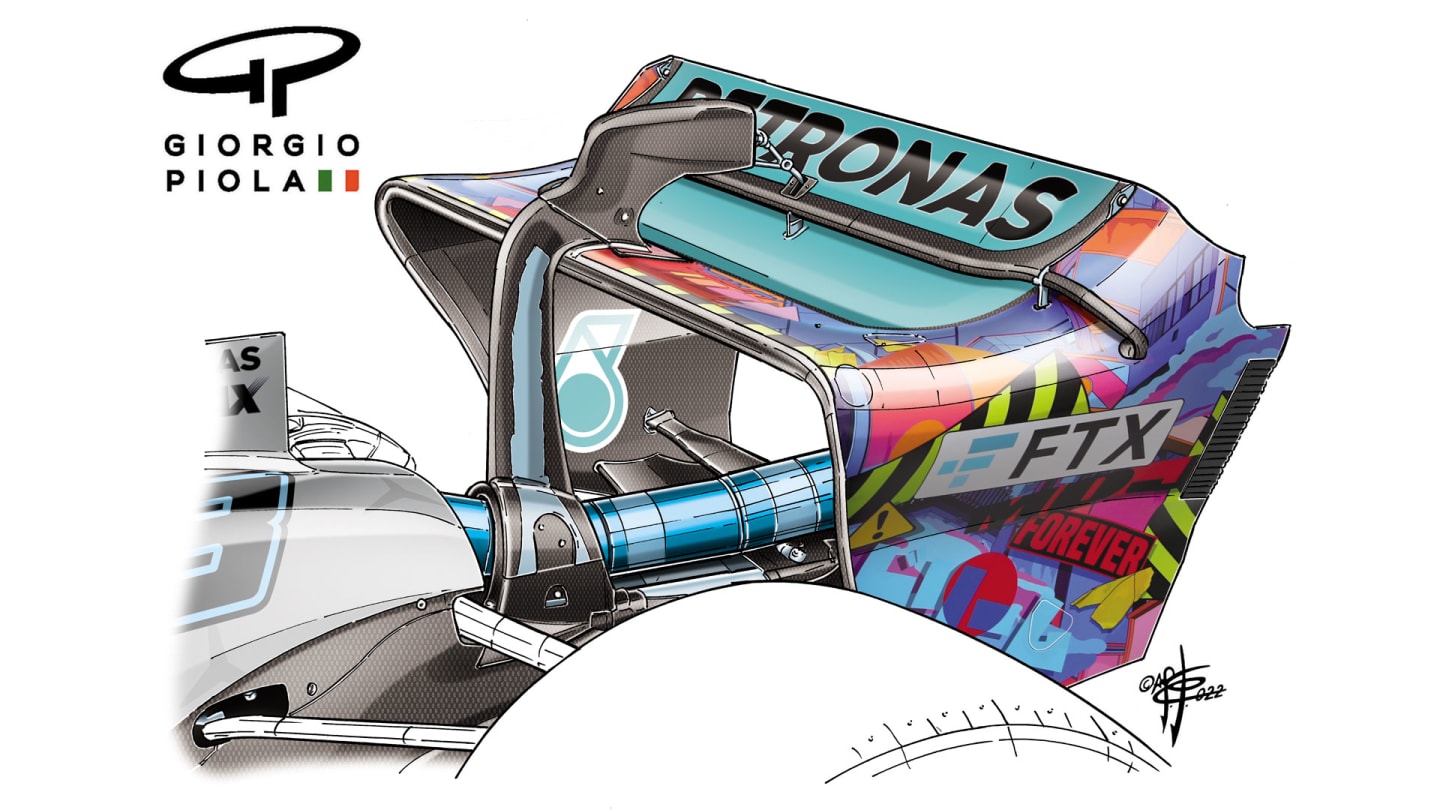
Technical
TECH TUESDAY: Understanding Mercedes' major Miami Grand Prix upgrade package

Share

Miami may not have been Mercedes’ most successful weekend, but the Silver Arrows did bring a host of new parts to their recalcitrant W13. Mark Hughes examines those new parts and their effect, while Giorgio Piola provides technical illustrations.
In what was a confusing Miami weekend for the team, Mercedes introduced a three-part aerodynamic upgrade for their so-far troublesome W13.
READ MORE: Exploring the roots of Mercedes’ perplexing Friday pace drop-off in Miami
These were not designed as specific responses to the car’s widely reported porpoising problems. Rather, two of the three changes were a more tailored low-downforce package and a third was a general upgrade which is expected to remain on the car even on higher-downforce tracks.

Mercedes brought a new rear wing specifically designed for low-downforce tracks rather than simply a trimmed version of the standard wing. This works in conjunction with a low-downforce beam wing featuring an upper element much smaller than the standard.
Looking first at the low-downforce part of the package, there was a new rear wing and associated beam wing. The upper wing featured a mainplane (the lower part of the wing) with a much smaller area and a straight leading edge. This was designed in conjunction with a beam wing that featured a much smaller upper element.
The beam wing directs airflow from the lower part of the car to the underside of the mainplane above it, helping to work the wing harder. The harder the wing works in producing downforce, the more drag will tend to be induced. In both the mainplane’s smaller area and the beam wing’s smaller upper element, reducing the drag has taken priority over maximising downforce.

A comparison showing the profiles of Mercedes' Miami rear wing (L) and their Jeddah rear wing (R)
Mercedes’ Trackside Engineering Director Andrew Shovlin gave further detail: “At previous low-drag tracks this year we just trimmed our existing wing away. But this one is specifically designed for this level of downforce. Also, when we re-made them, we have made them lighter, helping us get more weight out of the car.”
Like most 2022 cars, the W13 is over the minimum weight limit and the diet is ongoing.
But arguably of more interest than the low-downforce package was the new front wing endplate which featured a fairly radical re-fashioning of the slots at the lower edge which channel airflow from the wing elements out through the sides, out-washing around the tyre.

Top is Mercedes' front wing for Miami, with a cut-out on the bottom of the endplate encircled. Bottom is their front wing for Imola, without the cut-out
The whole rear bottom corner of the endplate had been cut away diagonally to reveal more of the wing elements, allowing those elements to divert a greater quantity of air outwards. A small cut-out in the extreme outboard end of the wing’s top element appears to be a vortex generator, helping give that diverted airflow greater energy.
The more powerful the outwash, the cleaner the airflow should be to the underfloor and along the car’s sidepods. Finding alternative ways to increase the power of the outwash now that the bargeboards have been eliminated by the regulations is a major concern to all the teams and Mercedes appear to have found a highly inventive interpretation of the new regulations regarding endplate design.

The red arrow illustrates what is believed to be a vortex generator to lend the outwash greater power as it is directed around the front wheel.
YOU MIGHT ALSO LIKE
News Santander launch global free education campaign inspired by Formula 1
Podcast BEYOND THE GRID: Valtteri Bottas on his break from racing, pushing for an F1 return and talks with Cadillac, Alpine and more
News Hadjar declares points run in Spain ‘a lot of fun’ as Racing Bulls team mate Lawson reflects on factor that ‘screwed’ him
Feature 6 Winners and 5 Losers from Spain – Who bossed it in Barcelona?




